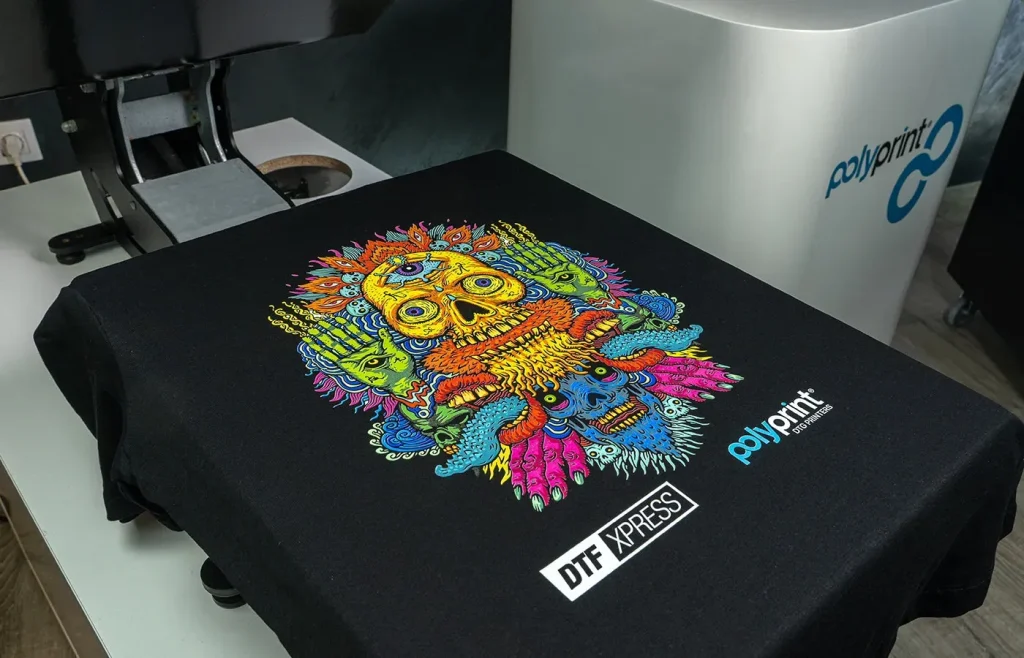DTF printing, or Direct-to-Film printing, is revolutionizing the textile industry with its ability to create detailed and vibrant designs on a wide array of fabrics. This innovative printing method is gaining traction among custom apparel makers, who appreciate its versatility and cost effectiveness. As we delve into the DTF printing advantages, this guide will explore the entire DTF printing process, making it accessible for those new to the craft. Additionally, we’ll provide insights for beginners with a comprehensive DTF printing guide to help you navigate the essential steps and equipment needed. Whether you’re a seasoned designer or someone just starting in the world of custom apparel, understanding the nuances of DTF printing can elevate your projects to new heights.
Direct-to-Film (DTF) printing has emerged as a cutting-edge solution in the realm of custom textile printing, offering unique benefits for creators and businesses alike. Often hailed as a game-changer for garment printing, this technique allows for the application of intricate designs on various fabric types with ease. With its remarkable compatibility with diverse materials, many regard DTF as a pivotal advancement in textile decoration. This guide will provide a detailed overview of DTF printing, outlining the essential steps in the process and highlighting its many advantages. Whether referred to as DTF or by its full name, this method is set to redefine the standards of quality and efficiency in custom apparel production.
Understanding the DTF Printing Process
The DTF printing process is a relatively straightforward yet innovative method that enables high-quality image transfers onto various fabrics. It begins with the creation of a digital design using software such as Adobe Illustrator or CorelDRAW, which allows for precise and vibrant artwork. After the design is ready, it is printed onto a special PET film using advanced DTF printers that utilize unique ink formulations. This ensures that the inks not only display vibrant colors but also adhere well to diverse fabric types. Once printed, a heat-activated adhesive powder is applied, which plays a crucial role in binding the ink to the fabric during the transfer phase.
Following the application of the adhesive, the film enters a curing phase where it is heated to activate the adhesive. This step is essential; if the adhesive isn’t properly cured, the transfer can fail, leading to products that do not meet quality standards. Finally, the transfer process involves placing the film on the desired fabric and using a heat press to firmly transfer the design. The result is stunningly rich graphics that maintain their integrity through numerous washes, allowing businesses and hobbyists alike to produce durable custom apparel that stands the test of time.
Frequently Asked Questions
What is DTF printing and how does it work?
DTF printing, or Direct-to-Film printing, is a process where designs are printed onto a special PET film. This film is then transferred onto fabric using heat and pressure. The steps include creating a design, printing it onto the film, applying a heat-activated adhesive, curing, and finally transferring the image to the desired fabric.
What are the advantages of using DTF printing for custom apparel?
DTF printing offers several advantages for custom apparel, including versatility across various fabrics, durability of prints that resist fading and cracking, cost-efficiency from lower setup costs, and exceptional image quality with vibrant colors and detailed designs.
What equipment do I need to start DTF printing?
To begin DTF printing, you will need specialized DTF printers that use inkjet technology, eco-friendly water-based inks, transfer PET films, and heat-activated adhesives, all essential for producing high-quality prints.
Can I use DTF printing on different types of fabrics?
Yes, DTF printing is highly versatile and works well on a variety of materials, including cotton, polyester, and fabric blends. This adaptability makes it an ideal choice for custom apparel production.
What resources are available for beginners interested in DTF printing?
Beginners can find numerous resources such as online tutorials from manufacturers, community forums on platforms like Reddit, and informative blogs from websites like Printful and Avery to help guide the DTF printing process.
How has technology improved DTF printing recently?
Recent advancements in technology have made DTF printing faster and more efficient, with enhanced color accuracy and printer capabilities. These improvements have resulted in less downtime and the ability to produce more impactful designs with ease.
| Key Points | Details |
|---|---|
| Overview of DTF Printing | DTF printing stands for Direct-to-Film printing, a method that transfers images printed on a film onto fabric. |
| Process Steps | 1. Design Creation 2. Printing 3. Powder Adhesive Application 4. Curing 5. Transfer |
| Advantages of DTF Printing | – Versatility – Durability – Cost-efficiency – Exceptional Image Quality |
| Required Equipment | – DTF Printers – Water-based Inks – Transfer Films and Adhesives |
| Current Trends | – Increased adoption in custom apparel – Improved printing technology |
| Learning Resources | – Online Tutorials – Community Forums – Blogs like Printful and Avery |
Summary
DTF printing is an innovative and rapidly evolving technique that has transformed the garment printing industry. By facilitating high-quality image transfers onto a variety of fabrics, DTF printing stands out for its combination of reliability, vibrant output, and overall efficiency. The beginner-friendly nature of this technology, along with cost-effective setup options, makes it a compelling choice for startups and seasoned apparel creators alike. With the right tools and understanding, anyone can dive into the world of DTF printing and create stunning custom designs.



